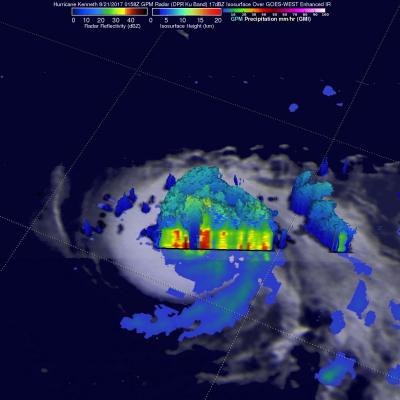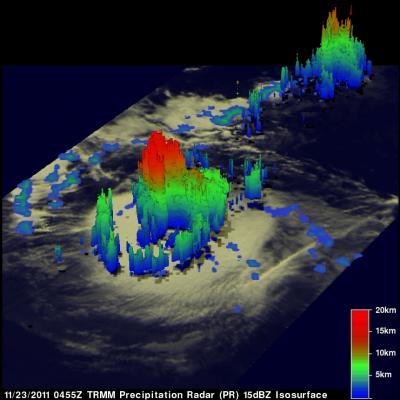Intensifying Hurricane Kenneth Examined By GPM
The GPM core observatory satellite flew over hurricane Kenneth when it was approaching it's peak power on August 21, 2017 at 0158 UTC. This rainfall map of hurricane Kenneth was derived from the GPM satellite's Microwave Imager (GMI) and Dual-Frequency Precipitation Radar (DPR) instruments. GPM's GMI data enables analysis of precipitation across a swath that is 550 miles (885 km) wide. GPM's radar (Ku Band) can be used to show three-dimensional maps of precipitation structure along a narrower 152 mile (245 km) swath. GPM's radar found rain falling at a rate of over 11.3 inches (286 mm) per




